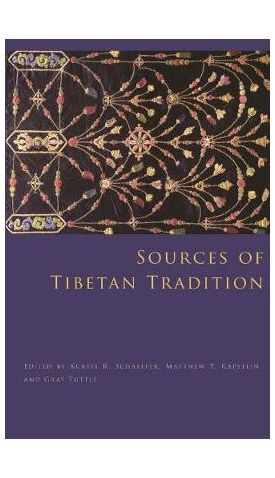אנו משתמשים ב-Cookies כדי לשפר את החוויה שלך. כדי לקיים ההנחיה החדשה של e-Privacy, עלינו לבקש את הסכמתך להגדיר את ה-Cookies. קבלת מידע נוסף.
242.00 ₪
SOURCES OF TIBETAN TRADITION
242.00 ₪
ISBN13
9780231135993
יצא לאור ב
New York
זמן אספקה
במלאי, (זמן אספקה 5 ימי עסקים)
עמודים
856
פורמט
Paperback / softback
תאריך יציאה לאור
13 בינו׳ 2013
שם סדרה
Introduction to Asian Civilizations
The most comprehensive collection of classic Tibetan works in any Western language.
The most comprehensive collection of Tibetan works in a Western language, this volume illuminates the complex historical, intellectual, and social development of Tibetan civilization from its earliest beginnings to the modern period. Including more than 180 representative writings, Sources of Tibetan Tradition spans Tibet's vast geography and long history, presenting for the first time a diversity of works by religious and political leaders; scholastic philosophers and contemplative hermits; monks and nuns; poets and artists; and aristocrats and commoners. The selected readings reflect the profound role of Buddhist sources in shaping Tibetan culture while illustrating other major areas of knowledge. Thematically varied, they address history and historiography; political and social theory; law; medicine; divination; rhetoric; aesthetic theory; narrative; travel and geography; folksong; and philosophical and religious learning, all in relation to the unique trajectories of Tibetan civil and scholarly discourse. The editors begin each chapter with a survey of broader social and cultural contexts and introduce each translated text with a concise explanation.
Concluding with writings that extend into the early twentieth century, this volume offers an expansive encounter with Tibet's exceptional intellectual heritage.
| עמודים | 856 |
|---|---|
| פורמט | Paperback / softback |
| ISBN10 | 0231135998 |
| יצא לאור ב | New York |
| תאריך יציאה לאור | 13 בינו׳ 2013 |
| תוכן עניינים | Preface Acknowledgments Transcription and Transliteration Conventions List of Contributors Dates in Tibetan History and Key Events in Neighboring Lands Maps PART ONE. Political Expansion and the Beginnings of Tibetan Buddhist Culture (Seventh to Tenth Centuries) 1. Tibet in Medieval Chinese 2. Imperial Records from Dunhuang 3. Imperial Edicts from Central and Far Eastern Tibet 4. Institutions and Knowledge Under the Tibetan Empire 5. Early Religion and the Beginnings of Buddhism PART TWO. Tibet in Fragments: From Empire to Monastic Principalities (Eleventh to Twelfth Centuries) 6. Renewal and Rediscovery: The Later Diffusion of Buddhism and the Response of the "Ancients" 7. The Proliferation of New Lineages 8. The Bon Tradition 9. The Development of Medical Tradition PART THREE. The Age of Monastic and Aristocratic Hegemonies: The Florescence of Tibetan Culture (Thirteenth to Sixteenth Centuries) 10. Elaborating the Narratives of Tibetan Antiquity 11. Historians and Historical Documents of the Thirteenth to Sixteenth Centuries 12. Explorations of Buddhist Doctrine 13. Literary Developments 14. Writings on Death and Dying 15. The Growth of the Arts and Sciences PART FOUR. The Age of Centralization: The Rise of the Ganden Government and the Period of Its Bid for Cultural Hegemony (Seventeenth to Twentieth Centuries) 16. The Beginnings of the Gandenpa School 17. The Fifth Dalai Lama and the Ganden Government 18. Aristocrats 19. Religious and Political Developments in Eastern Tibet 20. Encountering Other Cultures 21. Religious Writers in Amdo and Kham PART FIVE. Expanding Horizons in the Early Twentieth Century 22. Early Twentieth-Century Tibetan Encounters with the West 23. Tibetans Addressing Modern Political Issues Credits For Further Reading Index 06_scha13598_00_toc.doc: viii |
| זמן אספקה | במלאי, (זמן אספקה 5 ימי עסקים) |



Login and Registration Form